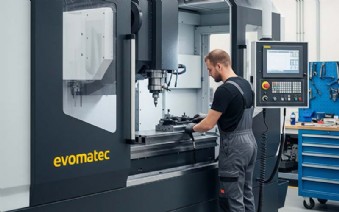-

Company
Product
ALUMINIUM MACHINES
PORTABLE MITER SAWS FOR ALUMINUM
PORTABLE COPY ROUTER MACHINES FOR ALUMINIUM
PORTABLE END MILLING MACHINES FOR ALUMINIUM
AUTOMATIC MITER SAWS FOR ALUMINIUM
COPY ROUTER MACHINES FOR ALUMINIUM
END MILLING MACHINES FOR ALUMINIUM
ALUMINUM CORNER CRIMPING MACHINE
DOUBLE MITRE SAWS FOR ALUMINIUM
AUTOMATIC SAWS FOR ALUMINIUM
BAR PROCESSING CENTERS
MACHINING CENTERS FOR ALUMINIUM COMPOSITE PANELS
NOTCHING SAWS
WEDGE CUTTING SAWS AND NOTCH CUTTING SAWS
MITER SAWS FOR ALUMINIUM
PVC PLASTIC MACHINES
PORTABLE MITER SAWS FOR PLASTIC
PORTABLE COPY ROUTER MACHINES FOR PLASTIC
PORTABLE END MILLING MACHINES FOR PLASTIC
MITER SAWS FOR PLASTIC
COPY ROUTERS FOR PLASTIC
END MILLING MACHINES FOR PLASTIC
WELDING MACHINES FOR PLASTIC
CORNER CLEANING MACHINES FOR PLASTIC PROFILES
DOUBLE MITRE SAWS FOR PLASTIC
BAR PROCESSING CENTERS
GLAZING BEAD SAWS
AUTOMATIC MITRE SAWS FOR PLASTIC
METAL MACHINES
MANUAL METAL SHEET BENDING MACHINE
MANUAL BENDING MACHINES
HYDRAULIC BENDING MACHINES
NON MANDREL BENDERS
PLATE BENDING MACHINES
BORDERING AND TRIMMING MACHINES
HORIZONTAL PRESSES
BELT GRINDING MACHINES
PIPE NOTCHING MACHINES
PIPE POLISHING MACHINES
LASER CUTTING MACHINES
PRESS BRAKES
VERTICAL TURNING CENTERS
MACHINING CENTERS
WOOD MACHINES
GLASS MACHINES
ROBOTICS SPECIAL MACHINERY
Service
Blog
Contact
Blog
- Home
- Blog
- BAR MACHINING CENTER
- MAINTENANCE AND SERVICE LIFE OF ALUMINIUM PROFILE BAR MACHINING CENTRES
MAINTENANCE AND SERVICE LIFE OF ALUMINIUM PROFILE BAR MACHINING CENTRES

Maintenance and Service Life of Aluminium Profile Bar Machining Centres – A Complete Guide
Introduction
Aluminium profile bar machining centres are key technologies in modern manufacturing. They enable the precise machining of long aluminium profiles with maximum efficiency and flexibility. Industries such as window and door manufacturing, facade engineering, automotive production, solar technology, and mechanical engineering rely heavily on these CNC machines.
Since bar machining centres require a high investment, one decisive question arises for companies: How can maintenance and servicing be optimised to extend service life and ensure cost-effectiveness? This article provides a comprehensive overview of maintenance strategies, influencing factors on service life, costs, and future trends.
Importance of Maintenance in Bar Machining Centres
An aluminium profile machining centre consists of complex components such as CNC controls, spindles, tool changers, clamping systems, and automation units. Even small deviations can impact machining accuracy. Proper maintenance ensures:
-
Reliability: Avoidance of unexpected downtime.
-
Productivity: Consistent machining speed and efficiency.
-
Quality: Prevention of tolerance deviations and rejects.
-
Cost control: Fewer unplanned repairs.
-
Service life: Maximum utilisation of the machine over many years.
Service Life of Aluminium Profile Bar Machining Centres
The average service life of a modern bar machining centre ranges between 10 and 20 years, depending on manufacturer quality, equipment, and production intensity. With professional maintenance and modernisation, even longer operating times are possible.
Key factors influencing service life:
-
Operating time: Number of shifts per day.
-
Material volume: Heavier and thicker aluminium profiles increase wear.
-
Machine quality: High-grade components extend service life.
-
Maintenance quality: Regular inspections improve durability.
-
Software updates: Keep the machine technically relevant.
Essential Maintenance Measures
Daily Maintenance
-
Cleaning chips and coolant residues from work areas.
-
Checking clamping systems and tools.
-
Visual inspection of cables and hoses.
Weekly Maintenance
-
Lubrication checks and refilling grease or oil.
-
Inspecting linear guides and axes.
-
Checking the coolant pump.
Monthly Maintenance
-
Running CNC diagnostics.
-
Inspecting pneumatic and hydraulic systems.
-
Axis calibration.
Annual Maintenance
-
Full inspection of mechanical parts.
-
Replacement of wear parts such as seals, belts, and filters.
-
Checking electrical systems and safety devices.
-
Updating machine software.
Cost Factors in Maintenance
Maintenance costs consist of several components:
-
Labour costs for in-house technicians or external service providers.
-
Spare part costs for tools, spindles, motors, and electronics.
-
Software costs for updates and licences.
-
Downtime costs during servicing.
On average, maintenance expenses amount to 3 to 7 percent of the purchase price per year.
Strategies to Maximise Service Life
Preventive Maintenance
Regular inspections and early replacement of wear parts prevent major damage.
Condition-Based Maintenance
Sensors monitor temperature, vibration, and run-time to detect issues early.
Predictive Maintenance
AI-based systems analyse data to dynamically adjust maintenance intervals, reducing costs and downtime.
Operator Training
Well-trained staff detect irregularities earlier and operate the machine more efficiently.
Use of Original Spare Parts
High-quality components ensure higher reliability and durability.
Benefits of a Consistent Maintenance Strategy
-
Higher machine availability
-
Fewer unexpected breakdowns
-
Improved investment planning
-
Optimised machining quality
-
Longer service life and better return on investment
Modernisation and Retrofit
After several years of use, it may be beneficial to extend machine life through retrofit measures:
-
Upgrading CNC control systems
-
Adding Industry 4.0 interfaces
-
Installing predictive maintenance sensors
-
Retrofitting energy-efficient drives
Retrofits prolong the lifetime and improve cost-effectiveness.
Future Perspectives
Maintenance of aluminium profile machining centres is evolving with new technologies:
-
Digital twins for real-time monitoring and simulation
-
Cloud-based service platforms for remote diagnostics
-
Artificial intelligence for predictive maintenance optimisation
-
Energy efficiency improvements through smart control systems
Conclusion
The maintenance and service life of aluminium profile bar machining centres are critical for ensuring profitability in production. Preventive maintenance, modern strategies, and advanced digital technologies significantly extend machine life and ensure consistently high product quality.
Companies that invest in professional maintenance benefit from reduced costs, higher productivity, and sustainable production in the long term.
- maintenance aluminium profile bar machining centre
- service life CNC bar machining centre
- maintenance costs aluminium machining centre
- preventive maintenance CNC machines
- retrofit aluminium profile machining centre
- service intervals CNC bar machining centres
- service life CNC aluminium machines
- investment maintenance aluminium machining centre
- longevity aluminium profile machining
- industry 4.0 maintenance aluminium CNC
 GERMANY
GERMANY ENGLISH
ENGLISH FRANCE
FRANCE SPAIN
SPAIN PORTUGAL
PORTUGAL








